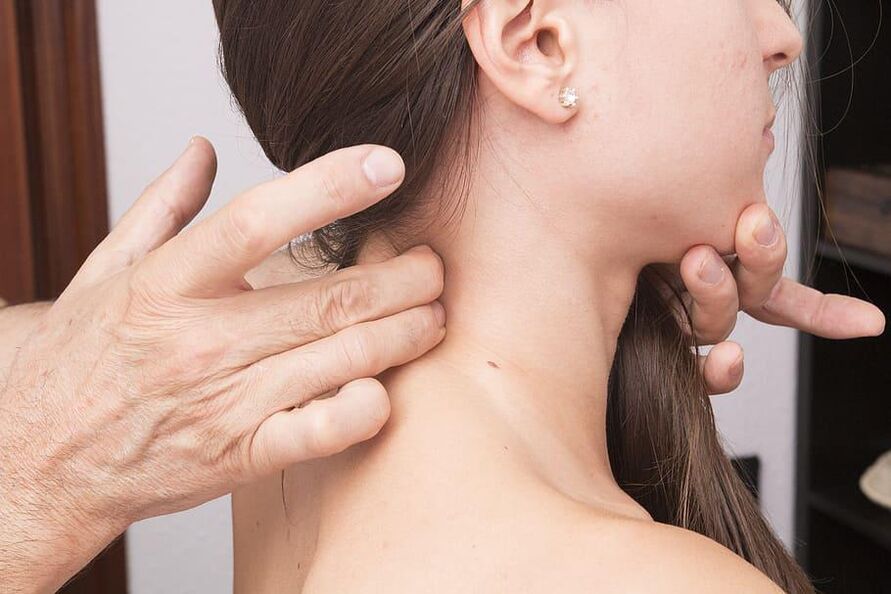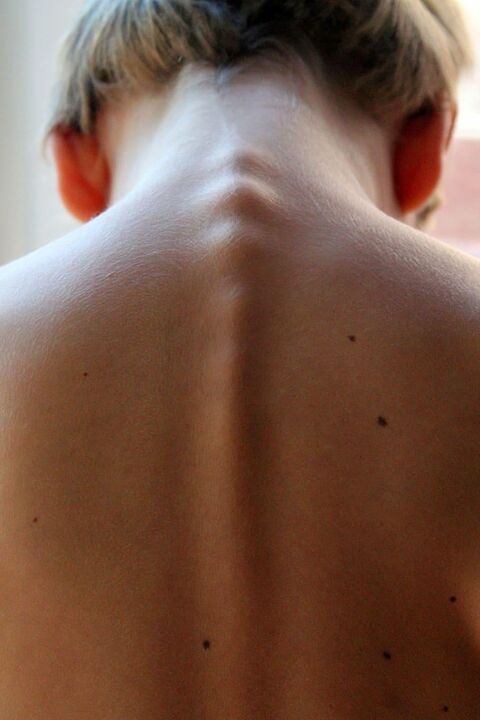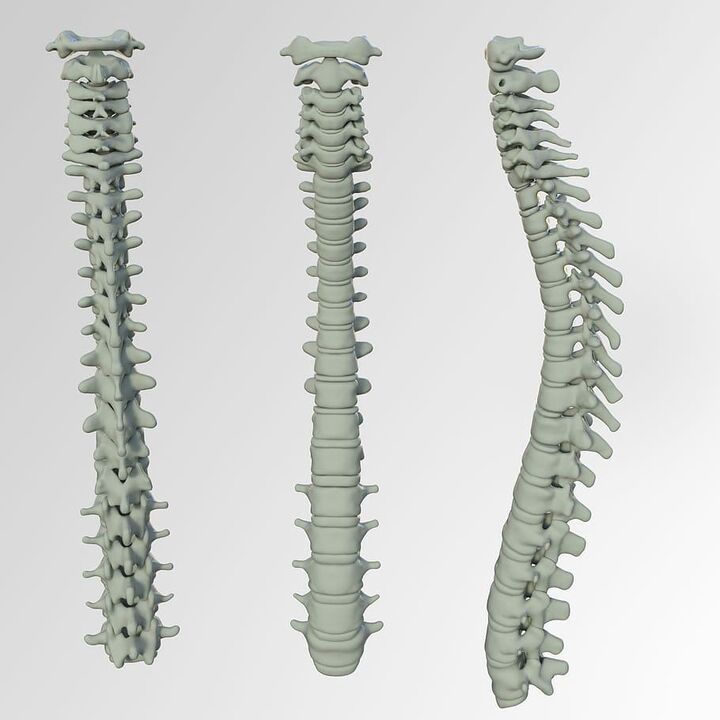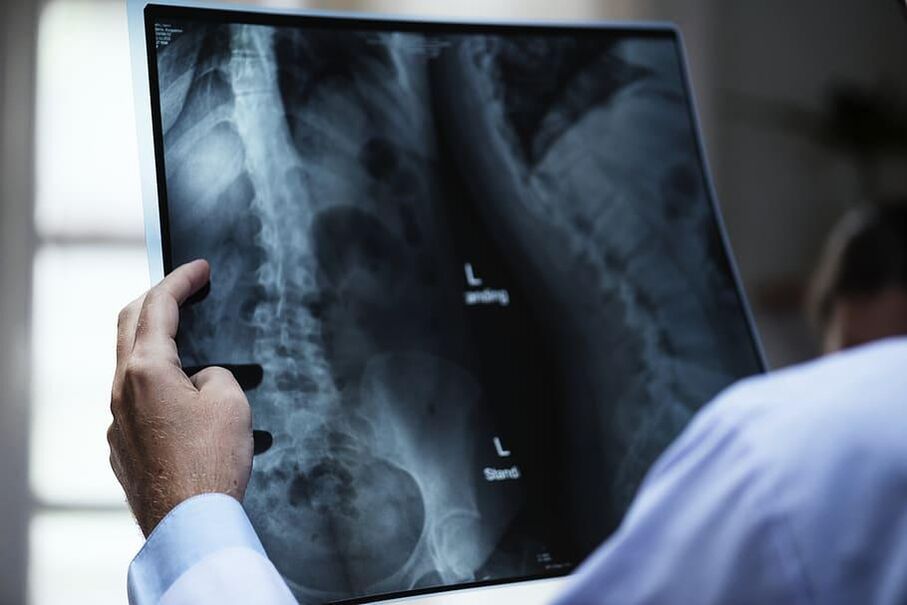Cervical osteochondrosis is a very common disease in the modern world. There are many people in the early stages, but do not suspect. The neck was widespread in the widespread osteocondrosis to sit more and start moving less. Let's see more of the reasons for the development of this unpleasant disease and the development of the methods of combating it.

Thus, cervical osteochondrosis is a degenerative-dystrophic disease of cartilage tissues of the musaloshelet system. The disease is characterized by pathological changes in the structure of cartilage, which violates the anatomical structure of the spinal elements, violate the skeletal mobility and cause painful feelings. The disease may affect any part of the spine, but the cervical segment suffers from this pathology due to excessive mobility and miniature vertebral size. The neck is experiencing daily effective loads. Vertabrae and intervertebral disks also force the return of the head and even grasp. From regular exposure to the outside, intervertebral disks appear in them in thin, microcracks. Over time, their height decreases, they start to change the smaller in the thickness and stopping the main function - the depreciation of vertebrae.
The causes of the development of the disease are primarily due to the development of age and bone and cartilage. The following reasons for osteocondrosis can be called:

- Violation of the posture
- Reducing motor activity as a result of a sedentary lifestyle
- There is a load on excessive weight, intervertebral disks, result of metabolic disorders
- Hereditary factor
- Long-term physical activity
- the abnormalities of the spine
There are special manifestations of cervical osteochondrosis. This is due to the anatomical features of cervical spine. Often, patients complain about the pain of various intensity, remain in a state for a long time. Other symptoms are often added to pain:
- weakness in upper extremities
- Matching and tingling hands
- stiffness when moving the head
- Dizziness (indicates that damaged elements affect the veins)
- The numbness of the lips
- A coma-feeling in the throat
In medicine, a syndoma is a customary accustomed to the verses of osteocondrosis according to the nature of combined symptomatic symptomatic symptoms. 4 out of this syndrome differ:
- Koreshka - Severe pain, as well as a collection of autonomy (dizziness, weakness, lumpacity in the throat), which is a bunch of a set;
- Vertebral artery - Damaged elements compress the large vertebral artery, which is the cause of severe headaches, dizziness;
- Vertebral - provokes the pain in the neck;
- Severe - Masculated under the attack of a angina pector, which shows himself with a violent chest pain similar.
1 degree osteocondrosis

Characterized by the start of the destruction of intervertebral disks. In the crack form, the power and elasticity of the disk in the Fibrus Ring is formed, and the height decreases due to nervous roots. A characteristic pain gave pain. Sometimes in 1 stage (prinicle) may not be such a pain and continues with average anxiety in osteocondrosis.
2 degree osteocondrosis
If the 1st degree was not treated or treatment was not effective, then the 2nd degree osteocondrosis occurs - chronic. The pain becomes permanent, the destruction of the interverference and continues the seal and causes small dislocation of cervical vertebrae. With cervical osteochondrosis, this stage can develop falling senior syndrome. This syndrome is characterized by severe pain, and a person is forced to support his head in a steady position to reduce pain.
3 degree osteocondrosis
Fibren Ring has already been destroyed almost, it also causes osteocondrosis - intervertebral disk or intervertebral hernia protrusions. In the third stage of osteocondrosis, the intensity of pain can reduce the intensity of pain, because the disk of the disk between the disk, which is affected by nervous roots, so the pain is not completely separated.
If there is a doubt of having cervical osteochondrosis, you need to contact a medical institution in a timely manner. Comprehensive diagnosis will help you to identify, assess and appreciate and understand the reasons for the development of pathology. The tension of cervical muscles with osteocondrosis is recorded in the basis of inspection and palpation - the tension of cervical muscles with osteocondrosis, in some cases the deformation of the spine is noticeable. After the objective diagnosis, the doctor sends the patient to additional work. The following diagnostic methods are used to confirm the diagnosis:
The tension of cervical muscles with osteocondrosis is recorded in the basis of inspection and palpation - the tension of cervical muscles with osteocondrosis, in some cases the deformation of the spine is noticeable. After the objective diagnosis, the doctor sends the patient to additional work. The following diagnostic methods are used to confirm the diagnosis:
- Magnetic Resonance Tomography
- Radiography (lateral and straight)
- Calculated Tomography
To determine the reason for the development of pathology, the ultrasonic examination of nearby bodies, heart extraction, blood vessels, blood vessels, blood vessels and urine urine are added.
Treatment of osteocondrosis requires a single approach. Pain can be used to temporarily remove pain, but the basis of therapy is physical therapy and massage. Helps increase massage, muscle hypertension, painProcedures also restore normal blood circulation by improving the supply of harmful tissues. According to the results of the massage course, the voltage is removed from the cervical region, and the cargo in the waist is redistributed. Drug treatment. Drugs eliminate pain and inflammation, restore blood circulation and eliminate cramps in neck muscles. To do this, the following medicinal groups can be used: glucortikosteroids, analgesic, muscle flows, etc. Physiotherapy treatment. The cervical muscles will help to relax, relax, overcome cramps and normalize blood circulation: acupuncture, laser effect, magnetotherapy, UHF therapy, phonophoresis, etc.  Therapeutic gymnastics. Special physical exercises will help the patient to strengthen the muscle frame, align the posture and improve blood supply to the upper part of the spinal column. Cervical spine is required for the effectiveness of advanced stages or conservative methods of osteocondrosis.
Therapeutic gymnastics. Special physical exercises will help the patient to strengthen the muscle frame, align the posture and improve blood supply to the upper part of the spinal column. Cervical spine is required for the effectiveness of advanced stages or conservative methods of osteocondrosis.
Recommended to prevent the development of cervical osteocondrosis: When sitting, make sure you do the five minute break each hour, avoid loads on the neck; Do not do the sharp moves of the head, follow the posture; Avoid hypothermia; To engage in physical education, swimming; Eat properly; The dream should be in a solid mat and in a low pillow, the bent angle of the neck should not be more than 15 degrees; After 25 years, shock load (jumping, running) in the spine. Anyway, when the symptoms of the disease appear - make sure you do a doctor. Don't make it self!













































